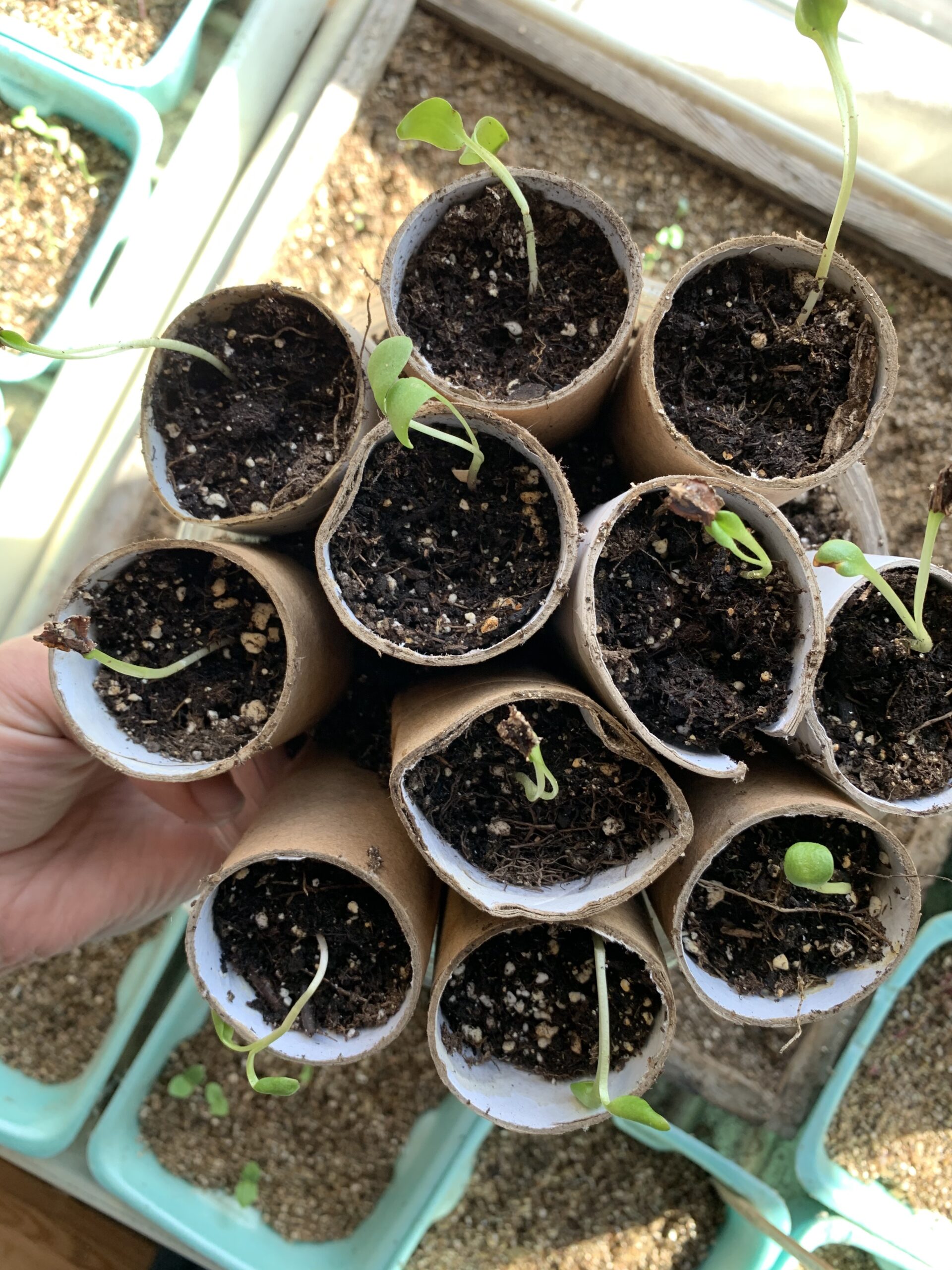By ALDONA BIRD
Newsroom@DominionPost.com
While you can buy plenty of equipment for seed starting — heat mats, grow lights, a variety of pots, etc. — you can also easily do it yourself with some upcycled materials.
To grow your own seedlings at home, all you need is a sunny windowsill, water, seeds, soil or other growing medium, and pots which can be just about any container which allows drainage.
Start by collecting containers for pots or making your own. Salvage hummus, sour cream and take-out containers from the recycling to use as pots.
To make your own, use newspaper (save these directions first!) or a paper grocery bag. Cut a wide rectangle out of the paper.
Sizing depends on how large you want your pot. Some seedlings can be started in a large pot, while others prefer to spend some time root-bound (tomatoes especially) and do better when potted up after allowed to grow a bit.
The size of paper rectangle you cut should be a couple inches longer than the circumference of the pot you’d like. The width should be double the pot height, plus roughly three inches for the bottom of the pot.
Fold your rectangle in half widthwise, then create a circle by tucking one side into the fold on the other end — overlap by an inch or two. At quarter points around the bottom (not folded edge), cut one- to two-inch slits.
Crease the flaps by folding them into the pot, then overlap them together securely, as if you were folding the top flaps of a cardboard box. Make this step easier by pinning the sides closed with a clothespin to keep the pot secure while you fold the flaps.

Once you’ve folded and finished your pot, fill with seed-starting medium or soil. Place these pots into a shallow cardboard box lined with plastic or onto a plastic tray to keep water and soil from marring the surface you put them on.
Make smaller pots for those seedlings that prefer being root bound, and simply put the whole paper pot, soil and seedling into a larger pot when the seedling is ready for potting up.
Toilet paper rolls also make good seedling pots. Fold the bottoms up as with the paper pots, or leave the bottoms open and pack rolls tightly into a waterproof container. Fill with soil, and start your seeds.
When starting seeds, use hot water to moisten and warm soil to speed germination. Tuck your seeds into a divot in the soil and cover, or sew on top of the soil — follow the direction indicated on the packet.
Many seeds should be started indoors weeks before the last danger of frost to give them time to grow before being planted out in May. Check the instructions on the packet or from the seller. Growing calendars are also available online.
If you don’t have quite enough sunlight to make seedlings happy, try putting a reflective surface (such as tinfoil) behind the seedlings opposite the window.
Seeds such as peas do well sprouting inside before you plant them outside. Rather than allowing them to grow into full seedlings, simply place them on a damp paper towel and put them in a warm place. You can put them in a resealable bag or just on a plate and keep moist.
Once they’ve sprouted, plant them out before they grow leaves. This gives the seeds a little boost, and you plant only the seeds which germinate.
If you haven’t already done your seed shopping for this year, or if you are looking for a few more things to plant, consider buying from local seed sellers. Sam’s Plants (samsplants.com), Two Seeds in a Pod (twoseedsinapod.com) and Sylvan Roots (on Etsy) are all local to Monongalia and Preston counties and have a variety of vegetable, flower and herb seeds available.
Tweet @DominionPostWV




